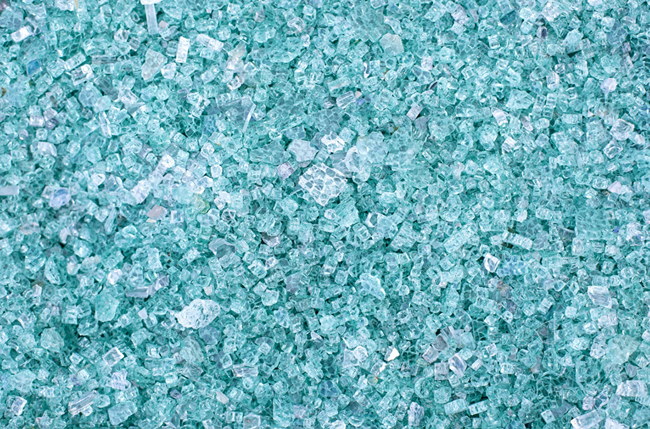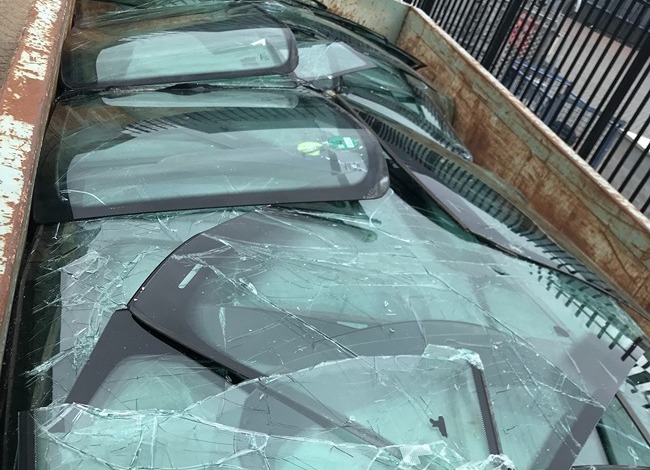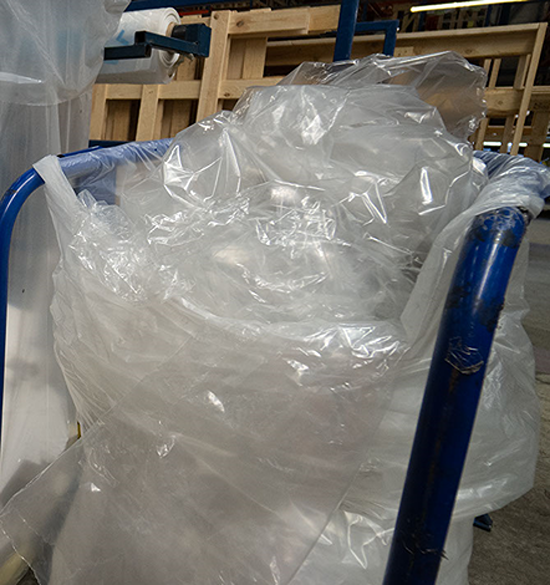GOING IN CIRCLES. IN A GOOD WAY.

Turning a waste into a resource
Circular Economy has to be presented to our customers as an added value that we are capable to offer them. Basically, after performing their job they have this heavy, bulky and unusable waste. However this waste can once again become a resource. It can even get back to the windshield production; allowing raw material, energy and carbon emission savings from the production stage.
Due to our unique positioning across the whole value chain, we know perfectly how to really recycle glass and not downcycling, meaning recycling it in a lower quality or functionality than originally. Thus our goal at Sekurit Service is to offer this service to our customers. A turnkey solution to manage their waste in a proper and efficicent and way that reduces environmental impact.

Reversing logistics, reintroducing back to production
We already have some examples across Europe when we are experimenting this flow back to our production line. First illustration, in the West of Germany, we have a pilot project where we collect windshield waste from our customers. Thanks to reverse logistics, we massify the flows and send them to an agreed partner who depollutes and treats the waste to obtain a good quality cullet that our flat glass plant reintroduces into its production.
Initiatives of this kind are multiplying across Europe, notably in Estonia, Poland, France and Spain and our objective is to be able to offer this take back service in all our countries by 2030.
A real win-win service! This offer of properly recycling this 100% recyclable material is one of the most efficient ways to reduce the carbon footprint of a windshield production and preserve raw material consumption.
Did you know?
Reintroducing one ton of broken glass (cullet) into a flat glass furnace saves 1,2 tons of primary raw material, out of which 850 kilograms is sand and 300kg of CO2 emissions.

Closing the loop – with other waste too
Glazing products are not the only waste that we can take care of from our customers. To reduce windshield damage and increase quality, in some countries, we now wrap windshields into plastic films made with recycled granules. This protective coating is very useful for transportation and handling of the product, but can rapidly become a waste that needs to be properly treated. As plastic can also be recycled, we are now collecting plastic film from our customers during our milk round. We then compress them in our warehouse, before finally sending them to our main supplier in order to be reinjected into their production lines. Once again a concrete example of closing the loop where a waste can be a resource.

Small steps in a long journey, beginning with key partnerships
It is the beginning of our journey in terms of circular economy and we are truly committed to bringing solutions for our customers, while reducing impact of our production, using our local logistics network.
At Sekurit Service we value the necessity to partner with key actors across the whole business value chain. Both local and national – from recycling companies, to logistics networks and service providers to suppliers.
Being a Sekurit Service partner means complying with environmental regulations, preferably going above and beyond minimum requirements. We choose providers and subcontractors that share our values, respect human rights and limit their impact on the environment.
For more information, please contact your local representative or get in touch via contact us
--> Follow our Made in Europe story (click for more info):
#1 - Sekurit Service commitment to sustainability
#2 - Reducing our direct & indirect carbon emissions to zero (more about Scopes 1 & 2)
#3 - Reducing our emissions along the value chain (more about Scope 3)
#4 - The fight against climate change is a collaborative work
--> Read more news about Sustainability and CSR (click for more info):
Sekurit Service Sustainability Roadmap
Saint-Gobain Automotive Glazing Replacement receives GOLD EcoVadis Rating
Gold Award for Saint-Gobain Glass Estonia SE Recognition by the Responsible Business Index (VEF)
